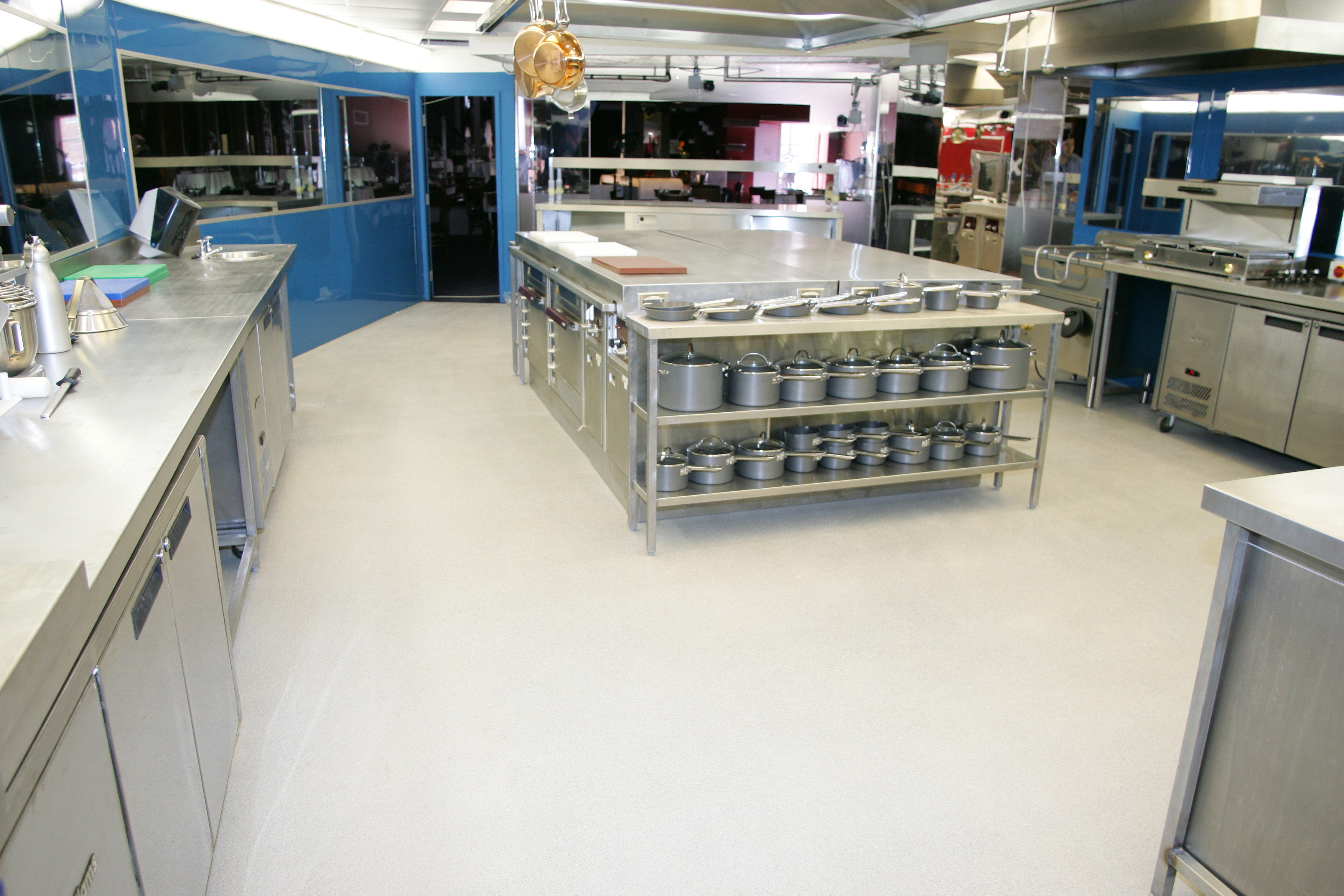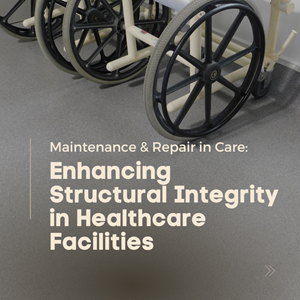Cost-Effective Commercial Kitchen Flooring Solutions
Designing a commercial kitchen requires a fine balance between functionality, durability, and cost. When it comes to flooring, achieving that balance becomes even more critical. Your flooring isn’t just about aesthetics; it must withstand heavy foot traffic, frequent spills, and demanding operational conditions.
So how do you invest in top-tier flooring without blowing your budget? By focusing on smart planning, strategic material choices, and expert installation, you can maximise value without cutting corners.
Plan Ahead to Avoid Surprise Costs
The most cost-effective flooring projects always begin with solid planning. Starting a project without clearly defined needs often leads to wasted money, delays, and costly mistakes. Here are key planning steps to streamline your project and protect your budget.

1. Define Your Challenges
Every commercial kitchen has its unique demands. A light-duty prep kitchen may not require the same flooring as a high-traffic restaurant. For example, vinyl composition tile (VCT) may suit quieter settings, but busier kitchens demand tougher materials like quarry tile or resin-based systems designed to handle wear and tear.
Ask yourself:
- Will the flooring withstand grease, water, and spills?
- How much foot traffic will the kitchen experience?
- Are there heavy equipment and extreme heat sources to consider?
Choosing the wrong material to save costs upfront often leads to higher replacement and maintenance expenses later.
2. Coordinate Schedules Ahead of Time
A smooth installation process saves both time and money. Overlapping work between subcontractors can slow progress and compromise quality. Schedule your flooring project when the space is free of other trades to give installers uninterrupted access. A well-coordinated schedule reduces labour costs, prevents delays, and ensures a higher quality finish.
3. Demand Expert Supervision
Unexpected challenges will arise during any job. Having an experienced supervisor on-site to address them quickly is vital. Whether it’s resolving moisture issues in the subfloor or ensuring tiles are installed to manufacturer standards, proper oversight avoids costly mistakes and delays.
Material Selection: Think Long-Term Value
1. Focus on Life Cycle Costs
Instead of comparing initial price tags, evaluate the full life cycle cost. This includes installation, maintenance, durability, and eventual replacement. For example, while both porcelain and quarry tile are excellent for heavy-duty kitchens, quarry tiles often have a lower total cost over their lifespan due to their durability.
However, seamless resin-based flooring systems such as epoxy-based coatings or polyurethane cement systems offer even greater advantages in many commercial kitchen environments. These systems eliminate the need for grout lines, which are common in tiled floors and prone to deterioration over time. Grout can harbour bacteria, absorb moisture, and require frequent maintenance to remain hygienic and intact.
2. Choose Low-Maintenance, Hygienic Options
Seamless systems are easier to clean and maintain, making them ideal for environments where hygiene is critical. Their non-porous surfaces resist staining, water ingress, and bacterial growth, helping kitchens meet Australian Food Safety standards such as AS 4674. In contrast, tiled systems require ongoing grout maintenance and are more susceptible to cracking and water damage over time.
Epoxy and polyurethane cement floors also offer excellent chemical resistance, slip resistance, and thermal shock tolerance, making them suitable for areas exposed to hot water, grease, and cleaning agents.
3. Source Materials at the Best Price
Work with contractors who have strong relationships with manufacturers or suppliers. Their ability to purchase in bulk often results in discounts you wouldn’t get independently. Ordering materials early also ensures everything is on-site and ready, avoiding last-minute rushes.

Proper Installation Reduces Long-Term Costs
1. Innovative Installation Methods
Value engineering helps contractors work smarter by identifying installation strategies that save time and labour without compromising quality. Experienced flooring professionals understand how to streamline workflows while still performing critical steps, such as surface preparation, moisture mitigation, and proper curing to ensure long-term performance. Efficient installation not only reduces labour costs but also helps minimise downtime, which is especially important in commercial kitchens where every hour offline can impact revenue.
2. Accommodating Tight Schedules
If your timeline is compressed, a good contractor adopts flexible strategies, offering after-hours work or split shifts to maintain speed without sacrificing quality. These professionals adjust to constraints without resorting to shortcuts that compromise the floor’s longevity.
3. Value-Added Problem Solving
Last-minute cost overruns or scheduling pressure can derail projects. An experienced contractor brings solutions, whether by recommending lower-cost material alternatives within your specifications or renegotiating supplier prices. The goal is to protect your investment while honouring your time and budget constraints.
Minimise Downtime to Protect Revenue
Every day a commercial kitchen is offline for flooring installation can result in significant revenue loss, especially in high-turnover environments like restaurants, aged care facilities, or hospitals. Planning installations during off-peak hours, holidays, or using rapid-curing materials can help reduce downtime and keep operations running smoothly.
For example, a restaurant generating $5,000/day in revenue could lose $25,000 over a five-day shutdown. These figures highlight the importance of factoring operational impact into your flooring strategy. Investing in faster installation methods, seamless systems, or premium materials may carry a higher upfront cost, but they can significantly reduce disruption and protect your bottom line.
Equally important is ensuring the initial design and material selection are fit for purpose. Floors designed without full consideration of the kitchen’s operational demands may fail prematurely, well before their expected life cycle concludes. This can lead to unexpected shutdowns for removal and replacement, compounding costs through lost revenue, reinstallation expenses, and reputational impact. A well-planned flooring solution not only lasts longer but also avoids the hidden costs of avoidable downtime.

Actionable Tips for Saving Money Without Compromising Quality
- Prioritise Proper Planning: Build a detailed roadmap to reduce wasted time and resources.
- Choose Materials Based on Need: Select options fit for your specific kitchen challenges.
- Aim for Life Cycle Savings: Think durability and maintenance instead of upfront costs.
- Schedule Smartly: Avoid overlapping trades to prevent installation delays.
- Hire Experienced Contractors: Their expertise adds efficiency at every stage.
- Demand Quality Installation: Skipping essential steps now leads to higher repair bills later.
- Plan to Minimise Downtime: Protect your revenue by scheduling strategically.
Conclusion
Investing in durable, cost-effective kitchen flooring starts with the right mindset. Proper planning, smart material choices, and working with experienced contractors play a pivotal role in creating a flooring solution that stands the test of time, without blowing the budget.
Focus on value, not just cost, and you’ll walk away with flooring that delivers in function, durability, and savings for years to come.
 Flooring, Concrete & Masonry
Maintenance & Repair in Care: Enhancing Structural Integrity in Healthcare Facilities
Flooring, Concrete & Masonry
Maintenance & Repair in Care: Enhancing Structural Integrity in Healthcare Facilities
 Flooring
MMA in Focus: A Practical Guide to Methyl Methacrylate Flooring
Flooring
MMA in Focus: A Practical Guide to Methyl Methacrylate Flooring
 Flooring
Christmas in July: The Ideal Time for Winter Refurbishments with MMA Flooring
Flooring
Christmas in July: The Ideal Time for Winter Refurbishments with MMA Flooring
